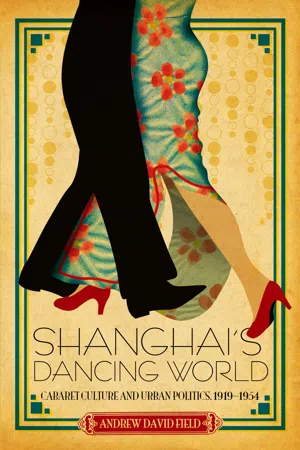
- English
- PDF
- Available on iOS & Android
About this book
Drawing upon a unique and untapped reservoir of newspapers, magazines, novels, government documents, photographs and illustrations, this book traces the origin, pinnacle, and ultimate demise of a commercial dance industry in Shanghai between the end of the First World War and the early years of the People's Republic of China. Delving deep into the world of cabarets, nightclubs, and elite ballrooms that arose in the city in the 1920s and peaked in the 1930s, the book assesses how and why Chinese society incorporated and transformed this westernized world of leisure and entertainment to suit its own tastes and interests. Focusing on the jazz-age nightlife of the city in its "golden age, " the book examines issues of colonialism and modernity, urban space, sociability and sexuality, and modern Chinese national identity formation in a tumultuous era of war and revolution.
Frequently asked questions
- Essential is ideal for learners and professionals who enjoy exploring a wide range of subjects. Access the Essential Library with 800,000+ trusted titles and best-sellers across business, personal growth, and the humanities. Includes unlimited reading time and Standard Read Aloud voice.
- Complete: Perfect for advanced learners and researchers needing full, unrestricted access. Unlock 1.4M+ books across hundreds of subjects, including academic and specialized titles. The Complete Plan also includes advanced features like Premium Read Aloud and Research Assistant.
Please note we cannot support devices running on iOS 13 and Android 7 or earlier. Learn more about using the app.
Information
Table of contents
- Half Title
- Untitled
- Untitled
- Untitled
- Contetns
- List of Illustrations
- Abbreviations
- Introduction
- From Grand Balls to Jazz Cabarets
- Turning Lazy Old Opium Smokers into Spry JazzManiacs
- Towers and Palaces
- Important Attractions
- Improper Amusement
- Ballrooms and Bombs
- Regulations and Interventions
- Resist to the End!
- Building a New Society
- Epilogue
- Appendix 1-4
- Notes
- Bibliography
- Index